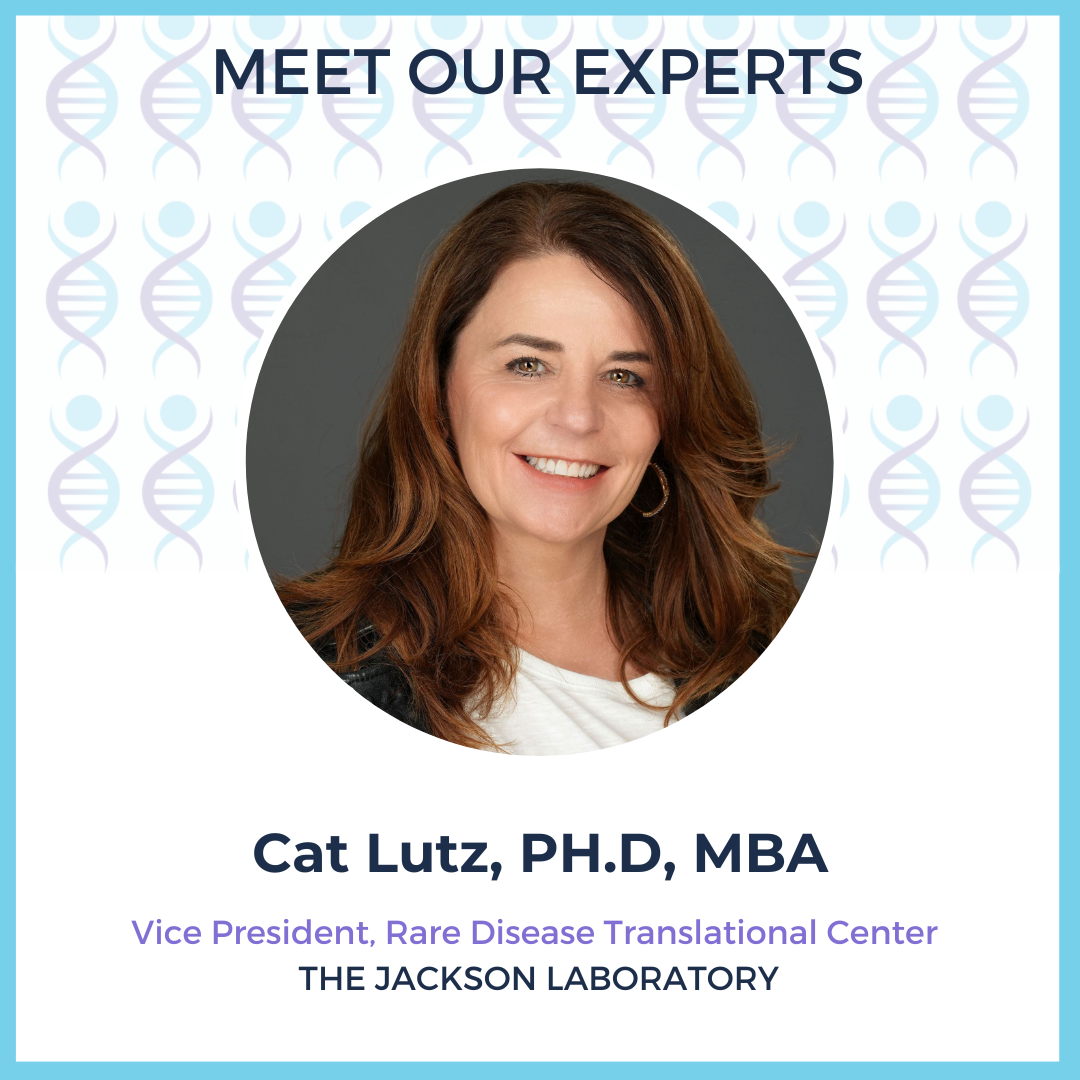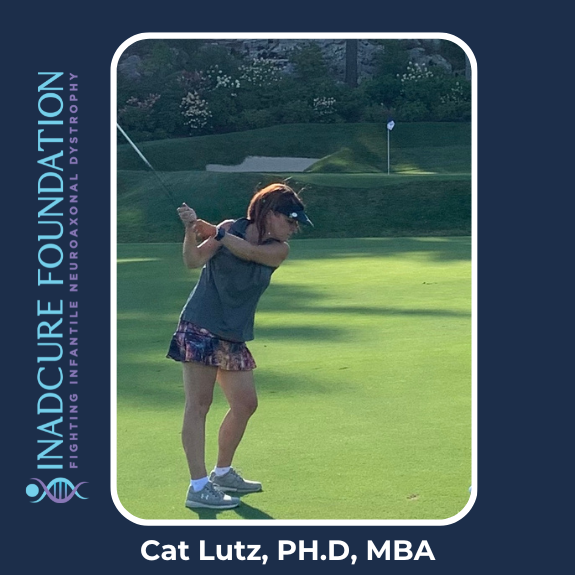The INADcure Foundation began its partnership with JAX in 2022 after being inspired by the studies they conducted for SMA. The scientists at JAX are conducting studies for our gene therapy program so that we can deliver robust proof of concept data in preparation for a gene therapy trial.

Cat Lutz, PH.D, MBA
Vice President, Rare Disease Translational Center
The Jackson Laboratory
LET’S MEET: Dr. Lutz
I have over 30 years of experience in research involving the use of mouse models to study the pathophysiology and treatment of genetic diseases. As a neuroscientist by training, I have focused my research on neurodevelopmental and neurodegenerative diseases. As Vice President of the Rare Disease Translational Center, I lead a team of scientists focused on modeling rare diseases in mice, with an eye toward translational therapies for patients.
I always had a natural affinity for critical thinking and hypothesis testing. It’s also very personally gratifying to have a position that allows me to help other people.
Working in mouse genetics for as many years as I have, it would be impossible not to see the potential of single mutations that occur in mice and their application to rare disease patients. I also have seen the emphasis of our medical system and drug development companies on common diseases. I believe that every child/person has the right to the highest quality of life they can achieve, regardless of how rare their condition may be.
I spent years working in Spinal Muscular Atrophy. There, I met the most talented, selfless, and wonderful group of scientists and clinicians, all focused on the same goal. It was an epiphany for me of the power of team science–what could be accomplished together as so much more powerful than any individual. Since then, I have worked on numerous rare diseases and have structured my program at The Jackson Laboratory to reach as many families as possible.
We think there is incredible potential to treat this disease and the mouse models match very well with the patient clinical manifestations.
Gene-based therapies are disruptive technologies that have the potential to treat rare diseases and the source of the genetic mutation. This, combined with earlier diagnosis has the potential to treat rare disease patients in a meaningful way.
Working with patient communities
I golf with good friends
Time
I’m a fan of any mystery
The power to communicate with animals

